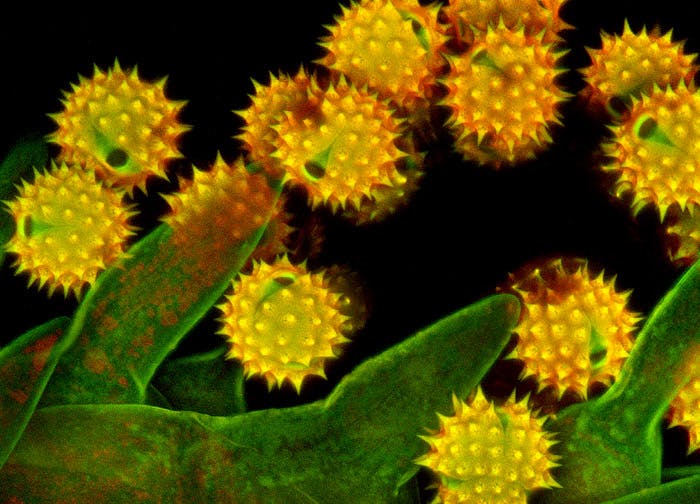
Philosopher Emanuele Coccia and Stefano Boeri, President of Triennale Milano, discuss the relationship between man and nature – which the current epidemic leads us to rethink – as well as the strategic role of the plant world and the concept of metamorphosis.
"The mystery of insect metamorphosis lies in the fact that two bodies that share nothing from an anatomical, ecological and ethological point of view, that is, the caterpillar on one side and the butterfly on the other, turn out to be the same life through metamorphosis. The metamorphosis is first of all this: the construction of an identity between two bodies, between two worlds and between two incompatible ethos."
"The first paradox of metamorphosis shows that a life can never be traced back to an anatomical, moral and world identity. Life is that which passes through bodies. We see it even today in the change from a worldly life to a monastic cloistered life. Life is that which lies between the worlds, which brings them together."

Shirley Owens, Flushing, MI, USA, 2008, photo by Olympus Life Science
"Each one of us is the butterfly of a caterpillar that existed before, we are the butterfly of our mother and father. Pregnancy is this strange cocoon, in which a maternal body rejuvenates itself to the point of making this younger self more independent and capable of being born a second time. Just as the butterfly has in itself an older life that has gone through another form, another way of being, each of us carries within us or is animated by a life that did not begin with our own birth, but is the same life, the same breath, the same DNA of another person. In each of us flows a life that is as ancient as the world is, as ancient as life on Earth is. The great beauty of Darwin's idea is that, in reality, all species have this relationship. What Darwin said is not only that species change, but that each species is a metamorphosis of a previous species. We are the butterfly of a previous species that is our caterpillar."

Viktor Sýkora, Asteraceae, Institute of Pathophysiology, Charles University, Prague, 2010, photo by Olympus Life Science
“Humanity is a recent form that has in itself many or all of the traits of the forms that life had to go through before it built ours. This is clear genetically, because our genetic code is a huge patchwork of lives and of previous forms: we have a part that comes from viruses and a part that comes from monkeys. It's as if in the human form, very little is human. Genetically very little is human, and to understand it, you don't even need to focus on DNA. You only have to look in the mirror and realize that there is nothing particularly human about having eyes because - precisely because of this process of metamorphosis - thousands of other species have eyes. Being human means being a strange walking zoo that puts together traits that come from totally different species, ages, eras and geographies. Each species is both a caterpillar and a butterfly of another species.”
“Each one of us is Gaia who locked herself in a cocoon and tried to invent a new face, a new breath. There is no environment: all that lies before us is our own life unfolded in other forms.”
"Life is always a second time: perhaps that is precisely why it is so difficult to live, because every living person, in reality, lives a life that was programmed to be lived in another world, in a past world, and must reinvent itself. Every living being, after all, is a cocoon that is trying to build itself new areas. [...] Life never dies, it cannot cease to exist; it can only pass from one living being to another, from one species to another. And this is what many past and present cultures think under the idea of reincarnation. There is a continuity that binds life to bodies and that allows the life of a body to pass from one form to another."

Compared to the Covid-19 pandemic that, in recent months, has spread throughout the world, Emanuele Coccia says: "The interesting thing about what is happening, despite the tragedy, is that this pandemic puts an end to the strange form of negative narcissism that all the talk about Anthropocene had also fed. We had gone from an attitude with which we had placed ourselves at the apex of creation to a very strange discourse, more theological than real and actually ecological, which portrayed humanity as something extremely exceptional in terms of destruction. Man is capable of destroying everything. There is a first effect of reality that this virus gives us in the fact that it shows that a tiny aggregate of protein molecules – that is hard to be recognized the character of life – is capable of bringing to its knees the most technologically developed civilization in the history of the planet".

Emanuele Coccia is an italian philosopher and teacher at the École des Hautes Études en Sciences Sociales in Paris since 2011. A specialist in Averroes and medieval and modern averroism, he has drawn from it an original reflection on images and the medial nature of sensitivity. Recently he has dealt with the metaphysics of plant life. Among his books: La trasparenza delle immagini. Averroè e l’Averroismo (Bruno Mondadori, 2005); La vita sensibile (Il Mulino, 2011); Il bene nelle cose. La pubblicità come discorso morale (Il Mulino, 2014); La vita delle piante. Metafisica della mescolanza (Il Mulino, 2018). He also edited, with Giorgio Agamben, the anthology Angeli. Ebraismo, Cristianesimo, Islam (Neri Pozza, 2009). He has given numerous lectures at institutions, museums and universities.
Credits
Cover photo: Yanping Wang, Wild flower seeds, Beijing Planetarium, Beijing, 2010, photo by Olympus Life Science